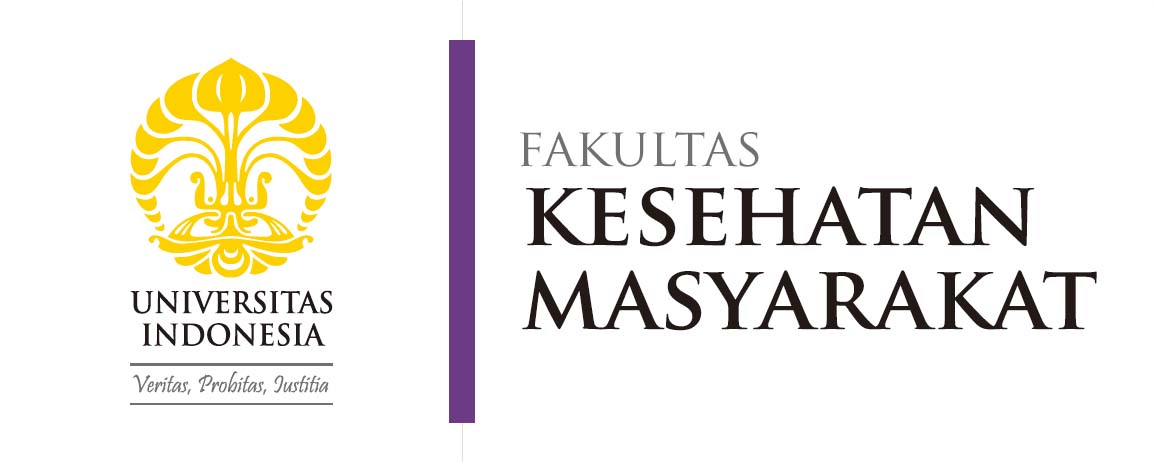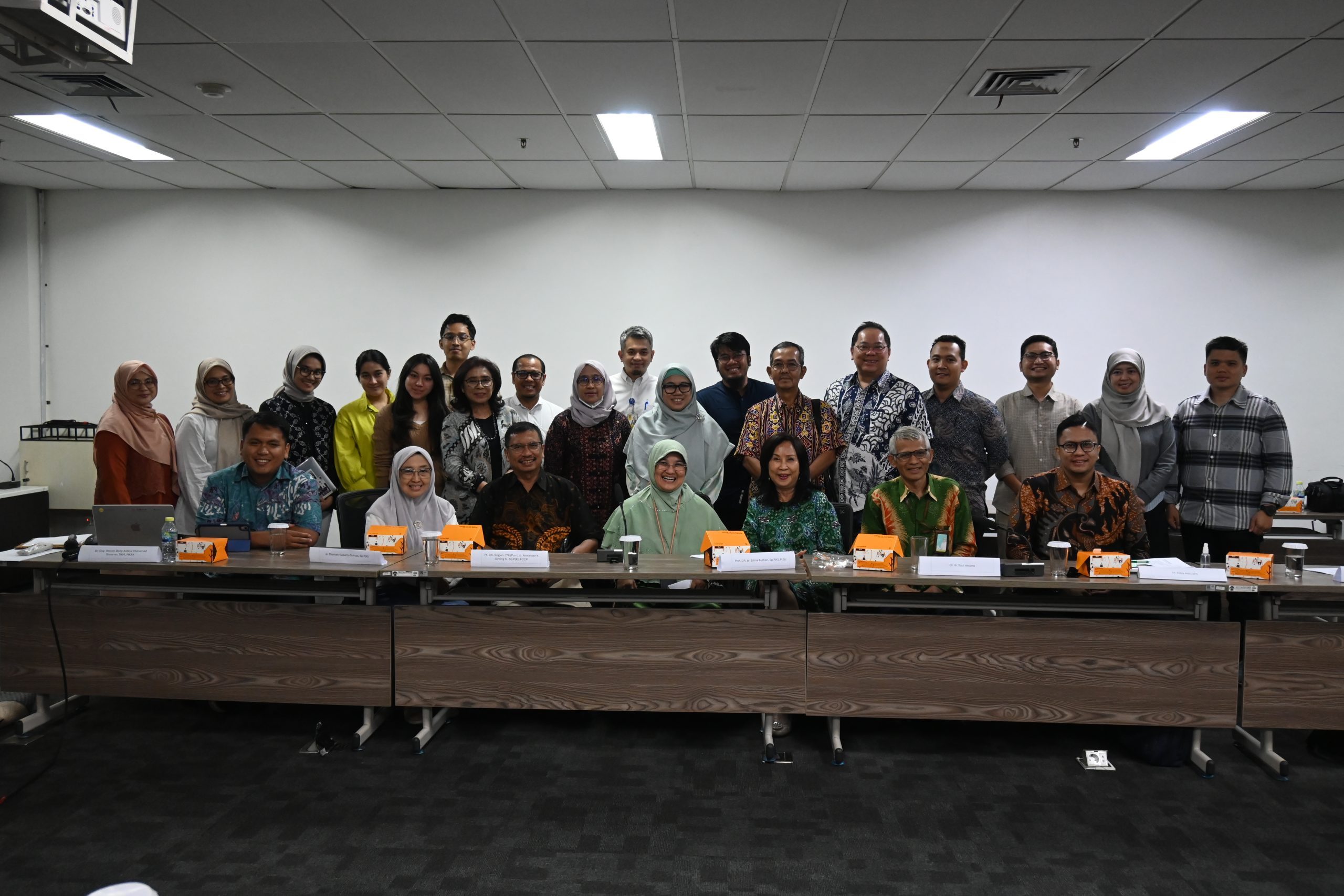Depok, July 31, 2025 — The acceleration of nickel downstreaming has positioned Indonesia as a key player in the global supply chain for batteries and clean energy. However, this industrialization raises the risk of respiratory disorders, such as Interstitial Lung Disease (ILD) and pulmonary fibrosis, due to exposure to hazardous emissions like SO₂, NO₂, dust, PM2.5, and heavy metals. Without mitigation, a surge in lung disease and premature deaths is projected, along with national productivity losses that could exceed 70% of royalty revenues within a decade.
Responding to this condition, the Faculty of Public Health (FPH) Universitas Indonesia (UI) held a follow-up meeting titled “The Impact of Downstreaming and Industrialization on Respiratory Health, particularly Interstitial Lung Disease (ILD) and Pulmonary Fibrosis” on Thursday (31/7) at the Health Sciences Cluster Building A, UI. The meeting brought together experts from the health, energy, environment, and labor sectors to formulate cross-sectoral policy recommendations addressing respiratory health risks amid the pace of industrialization.
ILD is a complex disease with subtle yet progressive symptoms. “Symptoms such as persistent dry cough and shortness of breath are often underestimated. Yet, if detected too late, pulmonary fibrosis can be irreversible,” said Dr. Fanny Fachrucha, Sp.P(K) from Persahabatan Hospital. Examinations such as HRCT and spirometry are crucial but remain limited in many regions.
Dean of FPH UI, Prof. Dr. Mondastri Korib Sudaryo, M.S., D.Sc., emphasized the importance of strengthening promotive and preventive efforts within the occupational health system. He underlined that in the midst of rapid industrialization and downstreaming, their impact on public health cannot be overlooked, especially from exposure to industrial byproducts. In the long run, the risk of chronic lung diseases such as ILD among workers must be taken seriously. “We see an urgency to develop collaborative interventions so that development does not create a long-term health burden, particularly lung diseases caused by environmental exposure,” Prof. Mondastri explained. In line with this, Prof. Dr. Robiana Modjo, S.K.M., M.Kes., as the person in charge of the event, also stressed the importance of mainstreaming health considerations into every stage of downstreaming, for both workers and surrounding communities.
Prof. Dr. Erlina Burhan, Sp.P(K), M.Sc., representing the Respiratory Health and Downstreaming Task Force, noted in her address that this meeting was a follow-up to a previous session held three days earlier, on July 28, 2025. According to her, behind the economic growth brought by industrial estate development lies a serious respiratory health threat, particularly in nickel and coal regions, affecting both communities and workers. She emphasized the importance of cross-sectoral and interdisciplinary approaches in shaping evidence-based policies. She also encouraged the establishment of a working group (WG) composed of academics, researchers, pulmonary health practitioners, and public health experts to bridge the voices of affected communities and guide sustainable institutional frameworks. “This is not merely a health issue—it is an issue of justice,” she asserted.
On this occasion, represented by Dr. Farchan Azzumar, the Task Force presented a draft policy brief addressing respiratory health challenges amid rapid industrialization and natural resource downstreaming in Indonesia. Dr. Farchan noted that while the government already has emission regulations, environmental impact assessments (AMDAL), and occupational health programs, the pace of downstreaming currently outstrips regulatory oversight and enforcement capacity. Key issues include outdated emission thresholds not aligned with technological advances; the absence of mandatory air pollution control (APC) devices in all smelters; manual and non-transparent air quality monitoring; weak integration of respiratory disease data between industrial clinics and public health facilities; and limited resources for enforcing OSH regulations. Meanwhile, industry CSR initiatives remain sporadic and unsystematic in reducing disease burden. He stressed that this is not merely an environmental issue but also one of economic sustainability, global reputation, and public health.
As solutions, the Task Force proposed a set of policy recommendations to national ministries, including the Ministry of Energy and Mineral Resources (ESDM), Ministry of Environment and Forestry (KLHK), Ministry of Industry, Ministry of Health, and Ministry of Finance. Key points include: updating emission thresholds and mandating APC devices in all smelters and coal-fired power plants; implementing real-time continuous emissions monitoring systems (CEMS); providing public dashboards for air quality data; developing a location-based national respiratory disease registry; and integrating disease surveillance data between industrial clinics and local health offices. Additionally, the Task Force advocated for a pollution tax scheme to finance respiratory health services, fiscal incentives for industries that significantly reduce emissions, and stronger enforcement of OSH principles across the industrial sector. These recommendations were grounded in data and research demonstrating the high health burden from nickel industry pollution. The proposed policies are realistic, cost-effective, and aligned with international best practices. The aim is for downstreaming to become a model of development that not only boosts GDP but also safeguards public health.
Dean Andreas Simorangkir, S.T., M.T., from the Ministry of Energy and Mineral Resources (ESDM), emphasized that lung and respiratory health issues affecting both miners and nearby communities are a shared concern requiring a cross-sectoral approach involving health, labor, environment, and energy-resource sectors. As a technical agency in energy and mineral resources, ESDM encouraged the policy brief to not only highlight health challenges but also propose practical and applicable solutions that could inform sectoral policy-making. “On the other hand, given that mineral mining activities remain strategically important as a key source of state revenue and a driver of national economic growth, it is essential that this policy brief also recognizes the vital role of the mining sector, while encouraging responsible mining practices that safeguard public health,” he added.
This perspective was echoed by Dr. Sudi Astono from the Ministry of Manpower, who stressed that every form of development has two sides. “We don’t yet know who is more affected—workers or surrounding communities. This is why risk-based medical check-ups are crucial, particularly for worker populations,” he stated. He noted that many free health check-up programs are not cost-effective, as they fail to target vulnerable groups or align with occupational risk factors. “If properly directed, these programs could significantly reduce the financial burden on both the state and companies,” he added, further advocating for incentive schemes for companies that transparently report occupational health risks.
Similarly, Dr. Selamet Riyadi, S.K.M., M.K.K.K., from the Ministry of Health, emphasized that free medical examinations should not solely be age-based but must consider exposure risk levels. He highlighted the importance of cross-sectoral collaboration to ensure equitable access to healthcare. “The coordination among experts today must be followed up all the way to the level of healthcare delivery,” he said.
Looking ahead, the initiative will continue with the drafting of a more comprehensive final policy brief and the preparation of stakeholder consultation agendas. This step forms part of a strategic effort to promote policies that prioritize the safety of both workers and communities amid Indonesia’s rapid industrial development.
The meeting was attended by diverse stakeholders across professions and institutions, including Dean Andreas Simorangkir from the Ministry of Energy and Mineral Resources (ESDM); Prof. Dr. Robiana Modjo, S.K.M., M.K.M. (Event Coordinator from FPH UI, Professor of OSH at FPH UI); Drg. Baiduri Widanarko, M.K.K.K., Ph.D. (Head of the Department of Occupational Safety and Health, FPH UI); Prof. Indri Hapsari Susilowati, S.K.M., M.K.K.K., Ph.D. (Manager for Partnerships, Alumni Relations, and Ventures, FPH UI); as well as Dr. Rita Rogayah, Sp.P(K), M.A.R.S., and Ret. Brig. Gen. TNI Dr. Alexander K. Ginting S., Sp.P(K), FCCP from the Respiratory Health and Downstreaming Task Force along with six other representatives. Also in attendance were representatives from Persahabatan General Hospital, the Pulmonology Department of Gatot Subroto Army Hospital, Sulianti Saroso Infectious Diseases Hospital, UI Hospital, the Faculty of Medicine UI, the Indonesian Society of Respirology (PDPI), the Indonesian Occupational Health Doctors Association (IDKI), and the Indonesian Occupational Medicine Specialists Association (PERDOKI). (DFD)

